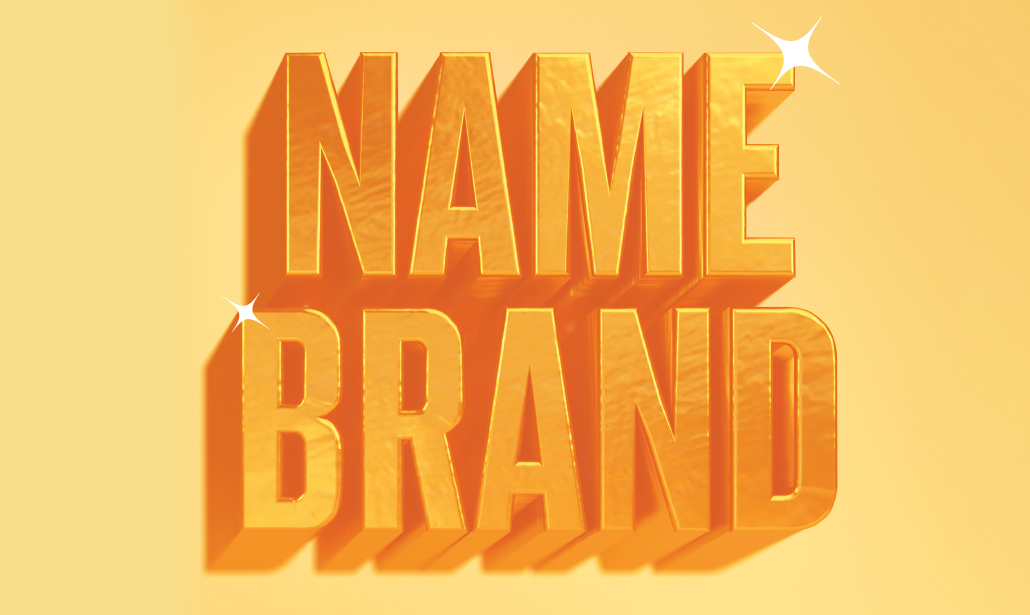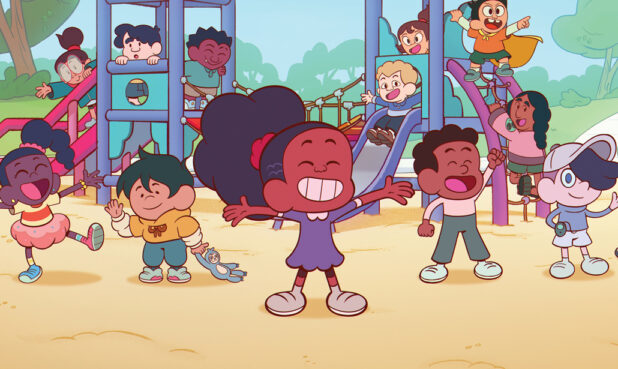Perhaps you want to move up the ladder to work with the industry’s top creatives. Or maybe your goal is to show-run your own series. You’re talented, and you work hard. It stands to reason that you will be recognized. Unfortunately, that’s not always the case. So what can you do? Think of yourself as a company of one, says Brand Strategist Karen Kang: “You have to say, I am my product. I am my service. How do people find out about me?”
The answer is personal branding, which is “really just your reputation,” says Executive Consultant Dorie Clark. The goal, then, is to take concrete steps to craft a reputation that can get your name recognized and remembered.
Conceiving Your Brand

Before you start networking and posting on social media, identify how you want to be known. One place to start is jealousy. While the green-eyed monster hardly seems like a logical jumping off point, “the truth is, we’re not talking about jealousy in the sense of wanting to bring somebody down,” says Clark. “We’re talking about looking at what other people have accomplished and identifying the part of yourself that says, ‘Wow, I wish I could have that. That’s really interesting to me.’”
Personal Branding Consultant Goldie Chan recommends making a list of five creatives you admire who are doing what you want to be doing as the next step in your career. Then look at how they developed their brand: “If they’re interviewed for an article, how do they express their art? How does that person speak about their career?” This can be a building block for how you eventually express yourself.
Next, identify your own strengths and hone in on a couple qualities that really set you apart from others in your field. This goes beyond your job skills since many people out there have those same skills. “Think about your competitive differentiation,” says Kang. “This can be leadership skills or a strong network. Even your personality.”
Consider reaching out to people who you know and respect—Kang calls this your closest “sphere of influence.” This could be a current boss, former boss, co-worker known for their area of expertise, someone in a professional organization, a committee member where you volunteered, or a former professor plugged into the industry. Ask them what they think your strengths are. This can jog ideas, “or you’ll discover, oh my goodness, everyone is saying this about me. I never thought of myself in that way,” says Kang.
Using the information you’ve gathered, you’re ready to do the assignment Chan gives her branding clients. She has them divide their goals into a Hard Category and a Soft Category. The Hard Category is the actual job goal. The Soft Category is how you want to be known in that job. Do you want to be a brash and dynamic showrunner? A warm and supportive head writer? Return to those people you admire—the qualities they have that appeal to you. Come up with 20 adjectives. Then, narrow it down to three that you will pair with your desired job. This is the seed you will use to begin growing your personal brand.
Building Your Brand
Once you’ve done your homework and identified your key strengths and qualities, it’s time to start building your brand messaging. Kang suggests starting with your elevator pitch. Introduce yourself, but only in the time it takes to get from the ground floor to the 10th—about a minute. Kang recommends that your pitch contain what you do (or want to do), your value, and the proof of your value (your experience).
Honing this pitch will help you focus your message for use in numerous areas, including your website, which is also another opportunity to connect with your sphere of influence. Ask for feedback on what you intend to put your website. You’re not only getting expert advice, but you’re also creating a network of people who know how you’re talking about yourself. As a result, your “story” remains consistent when they talk to others about you.
Consistency is key to all aspects of your personal branding, from your messaging to your social media handles. It may sound simple, but for your professional life, use your name. “You want to work toward a situation where you are sought out enough that people in the industry are aware of your name and are asking for you by name,” says Clark.
A cute or clever handle is fun, but can be difficult to remember, says Kang, adding: “In the end it’s your name that is tied to your brand or should be. If they can’t remember your name, you’ll never get recommended for a job.”
Another area that deserves attention is the photo you put online. This is “a great way to express your personality and style—and therefore your brand,” says Clark. “At a minimum, they should be professional. I’ve actually seen some people post their wedding photos or beach photos on LinkedIn, which is not a great idea. But it’s even better if the photos can capture a unique element of who you are—a signature piece of wardrobe or jewelry, or by showing you laughing or with a mischievous grin—however the people around you would see you and say, ‘That’s her exactly!’”
When it comes to using illustrations for head shots, “I think creative folks have more leeway than corporate types,” Kang says, adding the caveat that if someone aspires to a position like showrunner or director, they should consider using a photo.
Plan what kind of information you will share online. One way to keep people clicking on your profile is by making your social media a place where people go for information that will benefit them. Stay up to date on industry news or technology relating to your craft, for example. “This gives you the ability to integrate interesting ideas about your niche into conversation,” says Clark. “And that becomes part of your brand and your public persona.”
While many people think being active on social media means Twitter or Instagram, LinkedIn (see sidebar) is a place where you should focus regular energy. It’s specifically for professionals, and it’s likely the first place someone will go when they’re vetting you. “Odds are, if they don’t know you, they will type your name into Google,” says Clark. Because LinkedIn has such strong SEO, it’s most likely to show up on the first page results, making it one of the important first impressions people see.
“It’s one of the only places on the Internet, aside from your own personal website, where you control entirely what it says about you, and there’s a lot of power in that,” says Clark. “Sometimes people don’t take it seriously. Or they do this trashy, half-assed job of filling out their profile. It’s really doing yourself a disservice.”
Communicating Your Brand
You’ve crafted your message. You’ve created your website. Your social media is up and running. Now it’s time to get active and get your brand out into the world.
For social media messages, once again, consistency is important. “If you’re all over the map, people won’t know what to think about you,” Kang says. “You need to guide people on how you want them to think about your brand.”
A strong example of this is TAG member Kelly Lynne D’Angelo, a staff writer on Spirit Rangers. “She has several communities she’s part of and helped curate and grow, such as a D&D group, a Native American in entertainment group, and an improv and musical group,” says Chan. While not all are industry related, “if you live only in your animation world, that’s not as helpful as broadening your horizons beyond just animation. You never know where your next job is going to come from,” adds Chan. “[D’Angelo] always clearly expressed the kind of stories and projects she was interested in working on, so she was top of mind when specific opportunities to write and create came up.”
Along with communicating who you are and what you want, keep in mind that “your branding is not me, me, me,” says Chan. “I like to think about it as one-to-four, at least. If you are talking about yourself 75% of the time, then you talk about everybody else 25% of the time. It’s really about finding who your community is and promoting people within your community because that garners such good will. If you’re promoting others, people will see that and people will remember you more. A lot of it is about being remembered.”
Chan notes another TAG member who has done an excellent job in this area through mentorship: Jorge R. Gutiérrez, Creator and Director of Maya and the Three. Gutiérrez maintains a strong relationship with his own mentor, Guillermo del Toro, and he actively mentors and publicly supports up-and-coming artists. Along with making him memorable as being supportive and inclusive, “shout-outs, both privately into the room where the decisions are being made in the industry, as well as publicly on social media, are so helpful,” says Chan.
Offline, places where you can communicate your brand are industry or professional organizations such as the Television Academy or ASIFA-Hollywood. You can also join more specialized groups like LatinX in Animation or Black ‘N Animated, or social groups like Cars & Coffee or Warrior Painters, both run by TAG members. Volunteering for the Motion Picture & Television Fund is another way to broaden your network, as is pitching a panel to a conference like LightBox Expo or writing an article for an industry publication.
It’s important to remember that basically everyone you meet in your network will become an ambassador for your personal brand. “Most people get jobs through people they know, and if you’ve done a good job in communicating your personal brand, you may not know the person hiring, but 20 people you’ve networked with do,” says Clark.
For free worksheets to help create an Elevator Pitch, as well as Positioning Statement, Personal Brand Assessment, and more, go to BrandingPays.com. For a free Strategic Thinking self-assessment for creating long-term goals, go to DorieClark.com.



